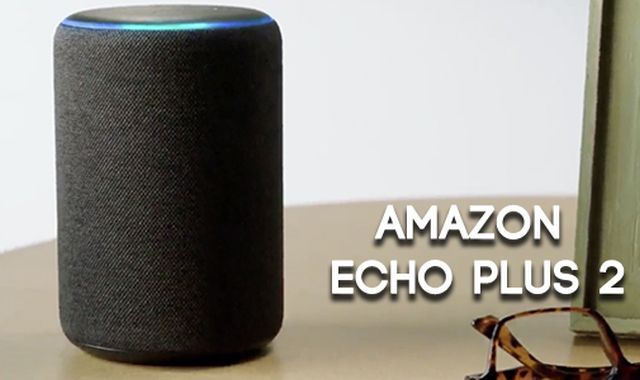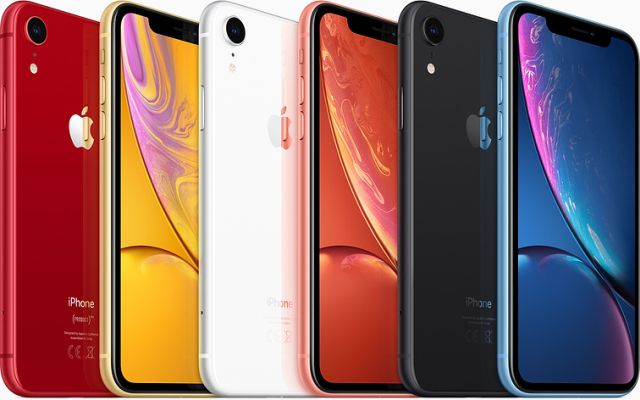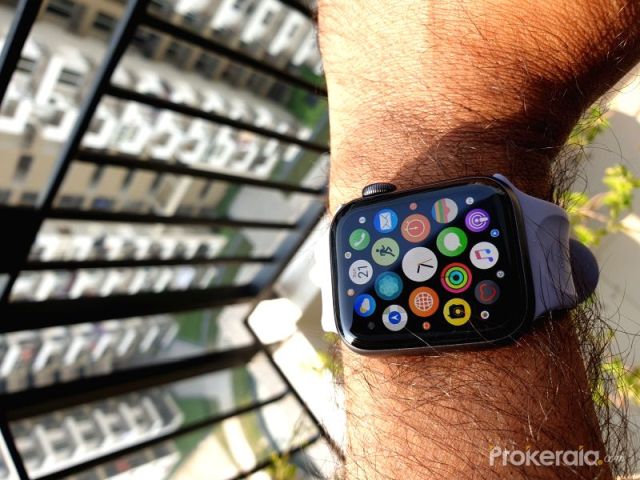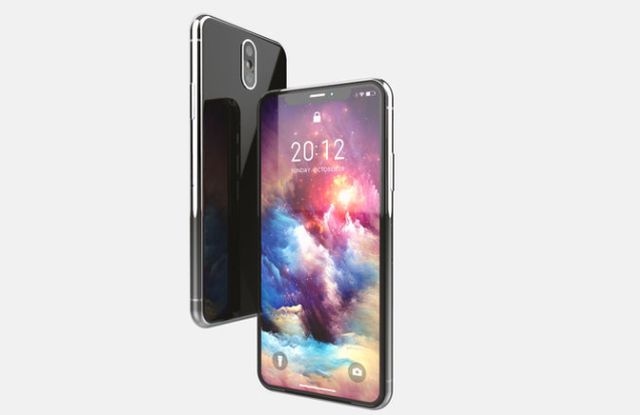
by admin | May 25, 2021 | Branding, Business, Markets, SMEs, Technology
 By Nishant Arora,
By Nishant Arora,
New Delhi : Smart home speakers are steadily gaining ground in India and Amazon’s Echo range has been appreciated the most so far, followed by Google Home.
Led by Amazon Echo, with 59 per cent market share, the smart speakers category in India grew 43 per cent in the second quarter (July-September) this year, according to an International Data Corporation (IDC) report.
Analysts see the nascent smartphone market in India growing beyond entertainment and Amazon, with its top-of-the-line voice-based Alexa platform, has brought the second iteration of its Echo smart home speaker to the country that is able to control connected devices around you and does not need third-party support.
The Indian smart home devices market which consists of connected lights, smart speakers, connected thermostats, smart TVs, home monitoring/security products and digital media adapters saw a healthy year-on-year growth of 107 per cent to hit 1.4 million shipments in the second quarter.
Let us see what the Rs 14,999 All-New Echo Plus (2nd Gen) with a smarter Alexa has to offer.
The top has four buttons — two to adjust volume, one to wake up Alexa and one mute button — along with seven ergonomically-placed microphones.
This time, the 780-gram device goes beyond reading daily news, playing music, announcing weather or ordering food.
The All-New Echo Plus comes with a built-in smart hub that helps you set up compatible Zigbee-enabled smart home devices directly, just using your voice.
Zigbee is a wireless technology developed to enable low-cost, low-power wireless machine-to-machine (M2M) and IoT (Internet of Things) networks.
Just ask Alexa to discover your devices and begin controlling compatible lights, plugs, locks, thermostats, sensors and in-wall switches.
For example, Echo Plus connected directly to Philips Hue light-bulbs.
Insert the bulb into a receptacle and tell Alexa to discover new devices. Within no time, she will throw up the name of the device (in this case, the light-bulb).
Start controlling the device, like “switch on the light Alexa”.
You can also control compatible lights and plugs from Syska, TP-Link and Oakter.
With seven microphones, beam-forming technology and noise cancellation, Echo Plus heard us from almost all directions.
Housing new speakers powered by Dolby and enhanced back volume, the bass felt stronger and the sound crisp and clear.
One feature that is worth mentioning is the equaliser (EQ) feature that allows users to personalise sounds by adjusting the bass, mid-range and treble.
Just ask Alexa to increase or decrease a specific band like “turn up the bass” or “decrease the treble” and she does it for you.
We could also made adjustments through the Alexa app.
The new Echo Plus also has a temperature sensor, making it possible for Alexa to tell the temperature in any room (it works with a compatible smart home thermostat).
With the device, call or message your friends and members in the family who also has an Echo device or the Alexa App.
Simply ask “Alexa, how do I set up calling?” and get started.
What doesn’t work?
Alexa is getting smarter by the day and we will soon have more local functionalities in it. At the moment, the device gives the best smart speaker experience.
Conclusion: From a tall, metal cylinder look in the first generation, Echo Plus has come a long distance in terms of look and feel. The second-generation Echo Plus with a far more intelligent Alexa is a real upgrade if you have experienced the first generation Echo.
(Nishant Arora can be contacted at nishant.a@ians.in)
—IANS

by admin | May 25, 2021 | Branding, Business, Markets, SMEs, Technology
 By Krishna SinhaChaudhury,
By Krishna SinhaChaudhury,
New Delhi : Since the launch of OnePlus 3 in 2016, Chinese premium smartphone maker OnePlus chose to follow a two-phones-a-year strategy and has been introducing a “T” iteration roughly six months after unveiling a flagship device, with additional upgrade.
The approach has been simple — to focus on powerful hardware backed by top-of-the-line chipsets. This has made OnePlus the leader in the Indian premium smartphone market for the second successive quarter that ended September 30, followed by Samsung and Apple, according to Counterpoint Research.
OnePlus marked its entry into the US with OnePlus 6T after partnering with mobile services operator T-Mobile in late October. It has now brought the device to India.
The company’s latest addition packs in all the goodness of OnePlus 6 along with meaningful upgrades such as the much-anticipated under-display fingerprint sensor, a smaller waterdrop-style notch and a bigger battery.
However, the 6T is OnePlus’ costliest smartphone so far with a price tag of Rs 37,999 (for the 6GB RAM and 128GB internal storage base variant). It is also available in a configuration of 8GB RAM+128GB storage and 8GB RAM+256GB storage for Rs 41,999 and Rs 45,999, respectively.
Unlike OnePlus 6, the 6T has been introduced in only mirror black and midnight black colour variants. We used the smartphone (8GB RAM+128GB variant) for almost a week and here’s what we think of it.
In terms of design language, the “T” refresh brings one much-talked about improvement — the tiny waterdrop notch — that gives an immersive 6.41-inch Optic AMOLED display with a 19.5:9 aspect ratio to the device.
It also means that the dreaded notch we saw in OnePlus 6 is now gone. The company now lets users hide the tiny notch completely in the settings.
Talking about more screen real estate, the bottom bezel of the smartphone is a tad thinner than its predecessor.
We pitted the device against the now obsolete OnePlus 6 by using the same wallpaper and observed that the taller display on the new iteration looked more dynamic.
At 8.2-mm, the all-glass phone is slightly thicker but feels more ergonomic, thanks to the pronounced rear curves.
OnePlus has tweaked the camera with what it calls the Night Mode, that essentially lights up a shot in very low-lit scenarios but takes some time to optimise the snap to add more details and make them look less grainy.
Also, you don’t know if the optimisation would work every time on a snap or not.
The 20MP+16MP primary camera took neat and detailed photos in proper lighting conditions and like before, the app itself was easy to use.
The “Auto Nightscape Detection” is worth mentioning that automates the device’s more advanced low-light photography mode the moment it detects it is hard to obtain ambient light.
The Bokeh effect in macro shots were particularly pleasing.
The 16MP front-facing camera also packs in some software tweaks that made selfies look better.
OnePlus 6T is fueled by a 3700mAh battery which easily helped sail through the day. The company’s proprietary “Dash Charge” technology is a respite for users. After plugging in, we received about 50 per cent charge in about 35 minutes.
The under-display fingerprint sensor was reasonably fast. We installed the latest update that improved the accuracy of the fingerprint scanner and could unlock the device with a damp finger as well.
Performance was blazing fast, thanks to the Snapdragon 845 chip and 8GB RAM.
What doesn’t work?
Since OnePlus is taking a leap towards perfecting smartphones with flagship-like features at a lower cost, it would have been great to see some IP rating on the device.
There’s no standard 3.5-mm headphone jack this time but that isn’t much of a deal-breaker.
OnePlus has also done away with the notification LED and the tiny notch only accommodates the selfie camera.
Conclusion: OnePlus has brought a slew of meaningful upgrades to the 6T and the phone definitely looks and feels better this time. Topped with a bigger battery and some hardware improvements, OnePlus 6T makes for a highly desirable smartphone in the premium category.
(Krishna SinhaChaudhury can be contacted at krishna.s@ians.in )
—IANS

by admin | May 25, 2021 | Branding, Business, Markets, Sales, Technology
 By Nishant Arora,
By Nishant Arora,
New Delhi : If you skipped buying luxury Apple iPhone XS and iPhone XS Max simply because your pocket did not allow, here comes iPhone XR in India that starts from Rs 76,900 and houses most of the Next-Gen features available in the costlier iPhones.
Top analysts have claimed that Apple is likely to sell its cheaper iPhone XR faster than iPhone XS and XS Max globally, and India is no different.
iPhone XR that went on sale from October 19 will be available at the Apple authorised resellers in India from October 26 in 64GB, 128GB and 256GB models in black, white, blue, yellow, coral and “(Product)RED” colours.
With all-screen glass and an aluminium design featuring 6.1-inch display which is touted as “the most advanced LCD in a smartphone,” the XR houses A12 Bionic chip with next-generation “Neural Engine”, which unlocks new experiences for immersive augmented reality (AR), games and photography.
Let us find out why iPhone XR is an easy upgrade from iPhone X or older Apple variants.
The display has rounded corners that follow a beautiful curved design. According to the company, the device has the most durable front glass ever in a smartphone along with a colour-matched, aerospace-grade aluminium band.
The new back-light design allows the display to extend into the corners, enabling a larger LCD than ever before in an iPhone.
“True Tone” technology uses an advanced ambient light sensor to subtly adjust the white balance onscreen to match the colour temperature of the light around us.
Result? Images on the display looked as natural as on a printed page, thus reducing eye strain.
The largest LCD ever in an iPhone has a footprint that falls between iPhone 8 and iPhone 8 Plus.
In the camera section, the iPhone XR with 12MP rear camera produced much better low-light performance than older iPhones. The rear camera supports three lighting effects: Natural, Studio and Contour.
The 7MP front camera also delivered advanced Portrait mode with sophisticated “bokeh” and “Depth Control” for stunning portraits. The “Smart HDR” feature brought more highlight and shadow detail across images.
The “Depth Control” feature lets users adjust the depth of field both in real-time preview and post-capture.
The iPhone XR is water resistant, with a rating of IP67, and protects against everyday spills including coffee, tea and soda.
For music lovers, iPhone XR delivers wider stereo sound for an immersive cinematic experience. It uses the four built-in mics to record stereo sound.
The glass back of iPhone XR allows faster wireless charging and improved off-axis performance even when your iPhone is off-centre on a wireless charging pad.
iPhone XR shoots good-quality videos, with better low-light performance and extended dynamic range in video modes up to 30 fps.
The A12 Bionic chip with the next-generation “Neural Engine” uses real-time Machine Learning (ML) to transform the experience of photos, gaming and Augmented Reality.
If you want to experiment with new apps on XR, try “Memrise” — an app that features more than 200 courses teaching Chinese, Spanish, Arabic, Italian, and more.
Point your iPhone at an object, take a photo and “Memrise” will identify it in your chosen language.
“Brainapse” is another informative learning app which helps in exploring the anatomy, structure and functions of the human skull and brain using AR.
Users can explore the external and internal parts of skull, brain and brain cells, learn about the functions of brain cells, and experience how our brain communicates with the five senses.
Conclusion: At this price point, iPhone XR will give you a near identical performance of an iPhone XS or XS Max. Those outside of the Apple ecosystem can also try this variant to enter the iOS family.
Aim to buy the “(PRODUCT)RED” variant as a portion of your purchase will go to the Global Fund to fight AIDS in Africa.
(Nishant Arora can be contacted at nishant.a@ians.in)
—IANS

by admin | May 25, 2021 | Branding, Business, Investing, Markets, SMEs, Social Media, Technology
 By Nishant Arora,
By Nishant Arora,
New Delhi : If you are constantly worried about an elderly person in your family suffering a fall in the bathroom or in the garden, the Apple Watch Series 4 is what you need.
Being utilised the world over for various health-related research — from decoding binge-eating disorder to connecting hip and knee patients to doctors — the new Apple Watch houses a feature called “Fall Detection” that will alert emergency contacts saved in your iPhone in case you meet with a hard fall — in the restroom or outdoors while performing routine activities. A timely response will not only save lives but also minimise the consequences.
In Series 4, the next-generation accelerometre and gyroscope are more powerful. Custom algorithms use data from both sensors to analyse wrist trajectory and impact acceleration, so that the Apple Watch can determine if and when a hard fall has occurred.
When an incident like this occurs, a hard fall alert is delivered to the Watch, and you can easily initiate a call to emergency services or dismiss the alert.
If Apple Watch detects you have remained motionless for one minute, an emergency call will be placed automatically and a message with your location will be sent to your emergency contacts. The feature is automatically enabled for users over age 65.
Apple Watch Series 4 is now available in India — the GPS+Cellular variant starts from Rs 49,900 and GPS-only model from Rs 40,900.
When it comes to design, the display of new Watch is over 30 per cent larger than the previous S3 generation, introducing a new technology called low-temperature polycrystalline oxide (LTPO) for better power efficiency.
The back of the Series 4 models is made entirely of black ceramic and sapphire crystal for improved cellular reception.
The Series 4 comes in two sizes: 40mm and 44mm. The cases are just slightly taller and a bit wider but thinner, making them smaller in volume.
With the GPS+Cellular model, you can make calls, reply to messages, stream Apple Music and Apple Podcasts — even when you’re away from your iPhone. Jio and Airtel are the two carriers who provide cellular connection for the new Watch.
The user interface and apps have been redesigned and optimised for the new display. Text is larger, so it’s easier to read; buttons are bigger so are easier to tap.
Apps like Maps and Photos now go edge to edge so you see more on the larger display. The watchOS 5 brings innovative features like automatic workout detection, Activity Competitions, Walkie-Talkie and more.
When it comes to health, the new Watch has and electrical heart sensor with two new features — low heart rate notifications and faster heart rate reading.
The moment you get furious — in office or at home — Watch Series 4 sends you an immediate notification about your heart rate going through the roof, requiring you to cool down.
Notifications for low heart rate could be a sign of a serious health condition. The optical heart sensor checks in the background and alerts you if it detects a heart rate that is below a specified threshold for 10 minutes.
The electrical heart sensor is also capable of taking an electrocardiogram (ECG) using the ECG app, which will be available in the US later this year as the Food and Drug Administration (FDA) has approved it.
Apple will bring this feature to more countries, including India, once the necessary approvals from relevant stakeholders and regulators are granted.
The 10.7mm thin (Series 3 was 11.4mm thin) S4 Watch has 64-bit dual-core S4 processor which is up to two times faster than the S3 (which had Dual-core S3 processor).
The 16GB Watch is water resistant up to 50 metres, comes with W3 Apple wireless chip, and has built-in rechargeable lithium-ion battery that gave nearly day-long power.
The speaker is 50 per cent louder than the previous generation and the new mic location reduces echo for clearer phone calls.
Apple has also made sure your health and fitness data is secure with the S4 Watch and is encrypted on devices and in iCloud.
Conclusion: With the unique “Fall Detection” feature, Apple Watch Series 4 is an apt gift for the elderly. For meeting daily health and fitness goals as well as connecting with family and friends, it is a great companion for millennials.
If you have tried the Apple Watch earlier, this is a great upgrade and for those who are new to the ecosystem, wear it once to experience the innovation.
(Nishant Arora can be contacted at nishant.a@ians.in )
—IANS

by admin | May 25, 2021 | Branding, Business, Investing, Marketing Basics, Markets, Sales, SMEs, Technology
 By Nishant Arora,
By Nishant Arora,
New Delhi : When Apple announced its 2018 line-up of iPhones last month, one thing was clear: The brand is getting bigger with top-of-the-line innovations in the premium and luxury smartphone market — dictating the rules for its rivals.
For an Indian smartphone user, carrying an iPhone has always been a style statement, irrespective of the price.
Most of us still look at Apple like owning a Ferrari but those who are in the Apple ecosystem for years know how it feels to own an iPhone and the experience is matchless.
The hardware is what keeps Apple top on the chart and with three new iPhones — iPhone XS, iPhone XS Max and iPhone XR — the Cupertino-based giant has brought an amazing camera, A12 Bionic processor and more storage — all screen and no buttons.
iPhone XS with 4GB RAM and 64GB internal storage costs Rs 99,900; 4GB and 256GB variant is priced at Rs 114,900 and the 4GB with 512GB variant will come for Rs 134,900.
Let us see what the 4GB+512GB variant has to offer.
Love at the first sight, we must say. Although there is no radical design change, the stainless steel frame and glass back with 5.8-inch OLED display and Super Retina HD screen allow for a good grip — an ideal size of a smartphone that fits in your palm.
The device houses the ground-breaking A12 Bionic chip, 12MP+12MP dual rear camera and 7MP front camera.
Sensing the growing love among the millennials for smartphone photography, iPhone XS has brought some great innovation to its camera system.
With “Smart HDR”, we were able to capture more highlight and shadow detail in scenes where we previously could not. It allowed photos with high dynamic range (HDR) and great image detail.
For example, scenes like a person with a back-lit background or a subject in deep open shade of a building in a city can now be captured in high precision.
The camera has capabilities like advanced depth segmentation using the Neural Engine, advanced bokeh quality in Portrait mode photos and dynamic depth of field that is user adjustable in the Photos app.
Blue skies were not washed out and images in low-light conditions were great.
In a nutshell, a true camera smartphone that matches a DSLR and you do not definitely need a digital compact camera anymore.
Security has always been core to Apple iPhones and iPhone XS is no different.
The technology that enables Face ID is some of the most advanced that Apple has ever created.
The TrueDepth camera captures accurate face data by projecting and analysing over 30,000 invisible dots, to create a depth map of your face and also captures an infrared image of your face.
In case there is a change in your appearance, the Face ID automatically adapts to those changes, such as wearing cosmetic makeup or growing facial hair.
If your device is lost or stolen (this will be the last thing you want, given the price), you can prevent the Face ID from being used to unlock your device with “Find My iPhone Lost Mode”.
iPhone XS gave us a full-day battery life with moderate-to-heavy usage.
The battery life on the iPhone XS is better thanks to A12 Bionic chip, helping the device last up to 30 minutes longer than iPhone X on similar level of usage.
The device supports wireless charging and a lightning connector can be used for fast charging.
iPhone XS has a rating of IP68 (maximum depth of two metres in water up to 30 minutes) and is splash, water, and dust resistant (a perfect companion for the Indian weather).
The device is also resistant to accidental spills from common liquids such as soda, beer, coffee, tea and juice (in the event of a spill, rinse the affected area with tap water, then wipe your iPhone off and dry it).
The dual SIM device has an eSIM (electronic SIM), apart from space for one nano SIM space.
An eSIM is a digital SIM that allows you to activate a cellular plan from your carrier without having to use a physical nano-SIM. Currently, Jio and Airtel are offering eSIM in India.
Both of your phone numbers can make and receive voice calls and send and receive SMS and MMS. If one number is on a call, incoming calls on the other number will go to voicemail.
The iOS 12 software is another key part in the iPhone XS. With the release of iOS 12, developers have created incredible experiences for iPhone XS and iPhone XS Max.
Siri Shortcuts and Screen Time help users manage their time spent on the device.
Let us see what does not work.
Apart from its price, nothing appears out of sync with the iPhone XS.
Conclusion: Apple CEO Tim Cook aptly said that the new iPhones replace digital camera, video camera and music player so you get three devices in one. It is how you should also look at the iPhone XS.
If you skipped iPhone X last year, go for iPhone XS. Take an EMI route (Rs 4,499 for 24 months) to own your fresh style statement. The iPhone Xs is available in India at retails stores from Friday.
If pricing is still a concern, the Rs 76,900 iPhone XR that comes in late October should fit the bill.
(Nishant Arora can be contacted at nishant.a@ians.in)
—IANS





